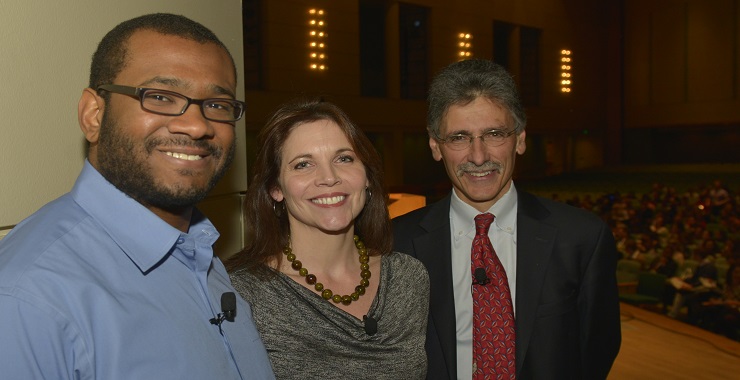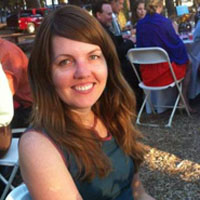6 Steps for Planning a Diverse Conference

Planning a diverse conference isn't easy. But it's not that hard, either.
As Net Impact’s Conference Director for the last three years, I’ve talked to a lot of experts, watched my share of YouTube videos, and invited nearly 2,000 talented and dedicated people to speak to our attendees. I’ve also witnessed a lot of events that fall short of inspirational when it comes to speaker diversity.
Net Impact is dedicated to giving young people the tools to solve our world’s toughest challenges. We know that a more diverse pool of people will arrive at more innovative, smarter, and better solutions. Our conference, which features 300+ speakers each year, is one place where we bring our commitment to diversity and equity to life. We make an effort to feature speakers that represent diversity in sector, age, political affiliation – and, of course, race and gender.
Net Impact began tracking speaker demographics five years ago. Since then, we’ve increased racial diversity in our speaker roster by 85% and now regularly reach or exceed gender parity. It’s not easy – but it’s not that hard, either – and our conference has improved as a result.
Here’s how you can approach speaker diversity at your next big event:
1. Set goals and hold yourself accountable
Before you’ve sent a single invitation, set specific representation goals for women, people of color, or whatever is a priority for your organization. Take a look at your roster from the previous year and commit to improving on it.
Figure out how you will track your progress. We ask speakers to give us some (optional) demographic information when they register. And we review our stats on gender and racial diversity each month as we’re planning the conference to see if we need to refocus our efforts.
2. Look for experts, not speakers
Women and people of color are literally everywhere. Even the most homogeneous-looking industries have qualified leaders that span gender, race, background, and experience. You’re not going to overcome gender and racial divides overnight, but you can take big steps in the right direction at your event.
Start by identifying experts in the subject matter you're presenting, rather than established "speakers." A few years ago, we were working with an external partner to develop a session. When he suggested four male speakers, we asked if he could recommend some women to round out the discussion. His response was, “I can’t think of any women right now who I’ve seen speak on this topic.” We asked him to forget about speakers and brainstorm his contacts in the field, and he did. He came back with a long list of qualified women and people of color. It’s easy to get stuck on people who are on the conference circuit, rather than think broadly about a body of experts. Don’t.
3. Keep your entire program in view
While rallying against all male panels is a noble effort, I’m far more concerned with balance across our entire program. We put together around 100 sessions each year. Despite our best efforts, usually one or two are comprised entirely of male speakers. But there are also several sessions featuring women exclusively. Certain fields of work lean heavily male or female. It’s OK if your sessions reflect that, as long as you’re not excluding anyone critical to the conversation, and you’re keeping a bird’s-eye view on the program as a whole.
4. Ensure diversity by design
There’s nothing more boring than a panel discussion where everyone agrees, so seek out diverse points of view from the outset. Start with a well-defined topic, then identify the specific perspectives you’d like to see: that might include representatives from multiple sectors, distinct career functions, or opposing sides of a debate.
After you identify the ideal perspectives for a dynamic session, you can start seeking out the right people to represent them. Look beyond the most-quoted experts or most frequent conference speakers. Digging deeper within a field will yield new voices that will add to a compelling discussion.
5. Be transparent
The Net Impact network is vast, and each year we draw about 40% of our programming from our members. Beyond standard requests for a pithy title and description in our call for sessions, we ask how the speakers will contribute to a diverse learning environment. Asking this question underlines our commitment and yields pitches with an eye toward diversity of all kinds.
6. Keep moving forward
I’m proud of the changes we’ve made to the Net Impact Conference program, and that our speaker roster is now a more accurate reflection of our diverse network of change agents. But I know we can do better – we should continue increasing the number of people of color on the stage and in the audience at our event. And while I’ve focused on gender and racial diversity, we should also take bolder steps to welcome others to the dais, including those from the disability and LGBT communities.
We believe these shifts are important, and we hope these tips are useful to others who share our commitment.

 Jessica is moving on from Net Impact this summer to start working on programming and partnerships for the
Jessica is moving on from Net Impact this summer to start working on programming and partnerships for the